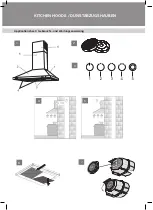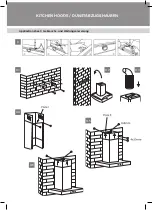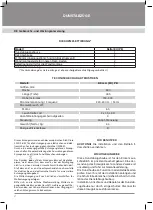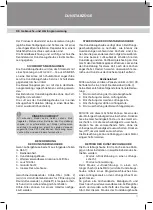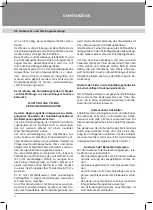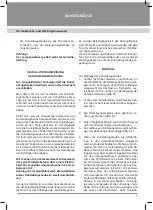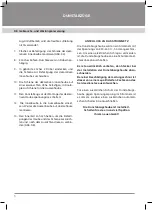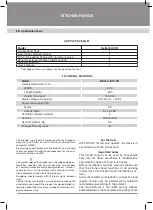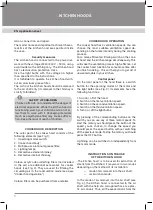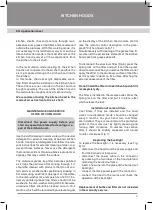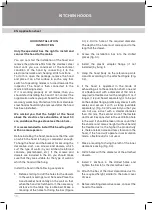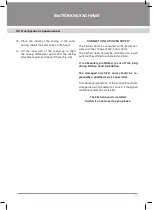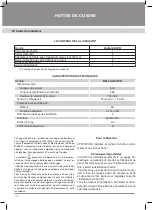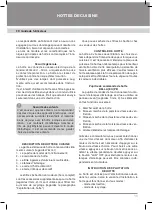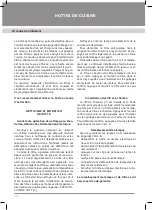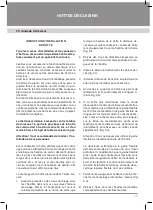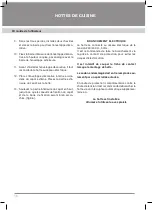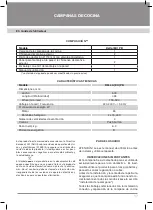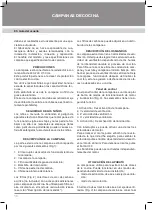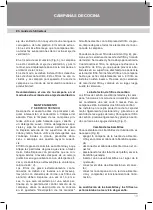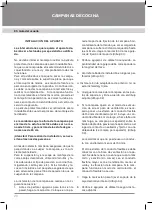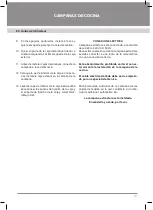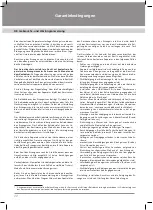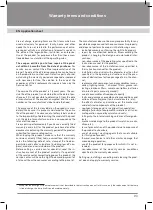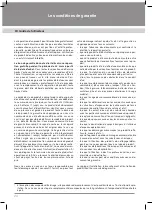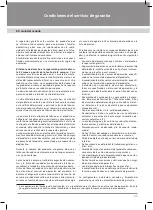
RU Инструкция по применению
10
EN Application sheet
KITCHEN HOODS
HOOD INSTALLATION
INSTRUCTION
Only the specialist has the right to install and
connect the hood to the mains.
You can not start the installation of the hood and
remove the protective film from the stainless steel
hood until you are convinced of the technical
condition of the hood by connecting it to the
electrical network and checking all its functions.
To do this, open the package, remove the hood
and place it on a flat surface in such a way that
switch of operating modes is turned towards the
inspector. The hood is then connected to the
mains and being tested.
If it is working properly at all modes, then you
should start installing the hood. If not, contact the
organization where you purchased the hood or the
warranty workshop. Protective film from stainless
steel hoods should only be removed after the hood
has been installed.
We remind you that the height of the hood
above the electric stove should be at least 50
cm, and above the gas stove less than 65 cm.
It is recommended to install this hood together
with one more person.
Before installing the hood, make sure that the wall
on which the hood is hung is competent enough.
To hang the hood and the bracket for securing the
decorative duct, use screws and dowels, which
suit the type of walls in your kitchen (reinforced
concrete, plasterboard, etc). If the screws and
dowels are included in the kit, you should make
sure that they are suitable for the type of wall on
which the hood will be hung.
Install the hood in the following sequence:
1. Before starting to drill the holes for the dowels
in the wall, markings must be made. Place the
hood bracket horizontally on the wall so that
when the hood is stretched to it, the necessary
distance to the table top is obtained. Make a
marking of the holes for fixing the bar (Figure
9.1). 2. Drill a hole of the required diameter.
The depth of the hole must correspond to the
length of the dowel.
3. Screw the installation bar into the drilled
places (fig. 9.1).
4. Install the plastic adapter flange (if not
installed) by fixing it.
5. Hang the hood body on the reference points
A and B according to the attached figure (Fig.
9.2).
6. If the hood is operated in the mode of
exhausting air to the ventilation shaft, one end
of a flexible duct with a diameter of 150 mm is
required (a flexible duct with a length of 1 m, if
longer, it is purchased separately) is to be put
on the adapter flange, preliminary smear it with
sealer and secure it with a clamp (available
separately). (Fig. 9.3) We remind you that you
can not use a duct with a smaller diameter
than 150 mm. The second end of the flexible
duct must be connected to the ventilation hole
in the wall. It should be taken into account that
the shorter and more straight (without bends)
the flexible duct is, the higher the productivity
is, there are less noise and less vibration in the
hood. If the hood will operate in recirculation
mode, a flexible duct is not used.
7. Make a marking for fixing the lath of the inner
decorative casing (Fig. 9.4).
8. Drill 2 holes with the diameter of the attached
dowels.
9. Install 2 anchors in the drilled holes and
tighten the bar to fix the decorative cover.
10. Attach the bar of the inner decorative duct to
the required height, similar to the outer cover
of case.
11. Before installing decorative cases, connect the
hood to the mains.
Summary of Contents for 00022882
Page 28: ...www krona steel com ...


